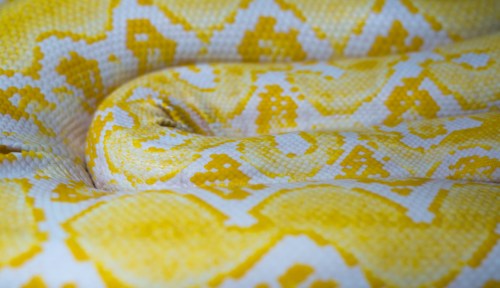The Next Time You’re Struggling To Fall Asleep, Try ‘Moon Breathing’ for Calm and Tranquility
Learn from yogis and physicians about the yogic practice of moon breathing, which can help boost relaxation and sleep quality.

To those unfamiliar with the powers of breathwork, the idea that you can change your physiological state by simply altering how you inhale and exhale may seem too good to be true. After all, breathing is something we do all day long, automatically. But when you harness your breath in certain ways (á la breathwork), it’s essentially the physical counterpart to meditation: Meditating uses the mind to calm the body, and breathwork employs the body to soothe the mind. It’s the reason why particular calming breathing exercises, like moon breathing, can shift you into a more tranquil mental state ideal for quickly drifting off to sleep.
Experts in This Article
yoga teacher, breathwork and meditation coach, Ayurveda consultant, and founder of yoga membership platform Unearthed
functional medicine physician
yoga instructor and owner of Arya Yoga Studio
sleep doctor and assistant clinical professor at Keck School of Medicine of USC
cardiologist and functional medicine practitioner
Like other breathing exercises for sleep, moon breathing harnesses the connection of the breath to the parasympathetic (aka “rest and digest”) nervous system, says cardiologist and functional medicine practitioner Sanjay Bhojraj, MD. Activation of the parasympathetic nervous system relaxes the body by slowing the heart rate and reducing blood pressure. At the same time, such parasympathetic activity also tones down the sympathetic (aka “fight or flight”) nervous system, putting you in a state of calm that’s necessary for accessing deep, restorative sleep.
What is moon breathing?
An ancient Indian breathing practice called chandra bhedana pranayama in Sanskrit (which loosely translates to “moon piercing breath”), moon breathing involves breathing through the left nostril, says yoga instructor Nikita Desai, owner of Arya Yoga Studio.
The name comes from the idea in the yogic philosophy that we all have a lunar energy within the left side of our body, and a solar energy within the right side, says Ayurveda consultant and yoga, meditation, and breathwork coach Angie Tiwari, founder of yoga membership platform Unearthed. It follows that connecting to the right side allows you to tap into a fiery and uplifting energy, while connecting to the left side (e.g., with moon breathing) allows you to slow down and steady yourself, she says.
“Moon breathing is a really good [technique] to do if you’re feeling anxious, but it’s also a good one to do if you are trying to get yourself to sleep and you’re struggling with racing thoughts before bed,” says Tiwari. Indeed, anxious or stressful thoughts at night can certainly keep you up (even if you’re worried about getting enough sleep), and a breathwork exercise like moon breathing can help circumvent that stress-and-sleep-loss cycle.
What are the benefits of moon breathing for relaxation and sleep?
While moon breathing has been around for centuries, recent research supports its potential benefits for mental well-being and sleep. As noted above, moon breathing can help you chill out by activating your parasympathetic nervous system, “which is conducive to relaxation, healing, and digestion,” says Dr. Bhojraj.
According to pulmonologist and sleep medicine specialist Raj Dasgupta, MD, chief medical advisor for Sleep Advisor, “people who practice moon breathing report experiencing reduced stress, improved sleep, and a sense of calm and relaxation.”
“People who practice moon breathing report experiencing reduced stress, improved sleep, and a sense of calm and relaxation.” —Raj Dasgupta, MD, pulmonologist and sleep medicine specialist
Indeed, a small 2022 study analyzing the effects of right versus left nostril breathing on brain activity1 (via encephalographic recordings, or EEG) in 30 subjects found that when the participants engaged in left nostril breathing, their brains showed greater EEG activity in the posterior region, which has been associated with being in a relaxed, restorative state.
The connection between left nostril breathing, or moon breathing, and relaxation has also been investigated in terms of benefits for sleep, specifically. Another small 2022 study found that among a group of 149 medical students, those who practiced left nostril breathing daily for four weeks demonstrated an improvement in self-reported sleep quality2 (based on the Pittsburgh Sleep Quality Index) as compared to a control group.
Part of the reason why moon breathing may have such a soothing effect may have to do with the reduction of air that you’re actually breathing while practicing it, says functional medicine physician Leland Stillman, MD. (After all, you’re restricting the opening through which air is flowing.) “Reducing the respiratory rate has a tendency to improve overall respiratory mechanics,” he says, contrary to hyperventilation—or essentially, breathing too much—which can trigger anxiety. (Just consider how your breathing might speed up in moments of stress.)
Reducing your breaths per minute also restricts how much carbon dioxide (CO2) you exhale, raising the CO2 level in your blood, adds Dr. Stillman. “CO2 is usually thought of as a waste, but it’s a nutrient in the sense that it opens your blood vessels and allows blood to flow around the body,” he says. By keeping more CO2 in your system, then, single nostril breathing (versus regular nasal breathing) can improve circulation, which can in turn boost your mental state.
How to try moon breathing
Part of the beauty of moon breathing is that you can use it virtually anytime, anywhere. “We get it in our head that yoga has to be 30 minutes, 45 minutes, or an hour, but even two minutes of stretching at your desk in the middle of the day is better than not moving your body at all,” says Tiwari. “When it comes to the breath, it’s even more powerful because you don’t need to roll out a yoga mat, and you don’t need to even be at your house.” It’s discreet and doesn’t require equipment or a set of skills. Meaning, you can also turn to moon breathing whenever you’re lying in bed and struggling to get to sleep.
Here’s how to practice moon breathing, according to Tiwari:
- 1.Find a comfortable position. Place your thumb underneath your right nostril to close it off.
- 2.Inhale through your left nostril.
- 3.Either:
- 4.Repeat, aiming to breathe at a steady pace with inhales and exhales of the same length.
Moon breathing is relatively easy to get the hang of, and it’s associated with noteworthy benefits. The next time you’re feeling jittery or anxious—whether before an important work presentation or first date or, yes, when your mind won’t stop racing before bed—try using chandra bhedana pranayama to your advantage.
Niazi, Imran Khan et al. “EEG signatures change during unilateral Yogi nasal breathing.” Scientific reports vol. 12,1 520. 11 Jan. 2022, doi:10.1038/s41598-021-04461-8
↩︎Gajbhiye, Himanshu A et al. “Effect of Short-Term Practice of Left Nostril Breathing on Various Sleep Parameters in the Medical Students.” International journal of preventive medicine vol. 13 110. 8 Aug. 2022, doi:10.4103/ijpvm.IJPVM_578_20
↩︎
Sign Up for Our Daily Newsletter
Get all the latest in wellness, trends, food, fitness, beauty, and more delivered right to your inbox.
Got it, you've been added to our email list.










